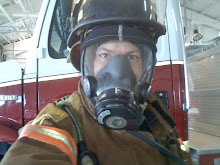The first half of the project, installing the Asterisk PBX software and my existing TDM card in the IBM server, went as well as could be expected. The only hiccup involved a dead CMOS battery, which concerning the age of the server (about 8 years) and the fact that it sat in my parents' basement for close to one of those years that isn't surprising. Replacing the rediculously overpriced battery ($5) fixed all of it's problems.
The other half of the project, transferring the Windows 2000 file server from the ICP Electronics computer to the dual Pentium-III workstation box (the former PBX) proved a lot more... interesting.
First, it appears that I had a bad IDE cable; I had as a last resort on the ICP box tried using "tube" cables to increase airflow, and one of the two storage discs apparently failed... After transferring the system to the new computer the problem continued... In frustration I gave up for the night, and the next time I tried the system I discovered that the fan in the switching power supply had failed... Fortunately I had a spare, and since by now I suspected that the hard disk failure was due to a cable problem I replaced the tube cables with standard ribbon cables. Problem solved. Now I just need to finish working that computer through the entire Windows Update cycle and it'll be finished. This computer uses the failed Slot-1 processor form factor, which has decicive advantages over the previous (and current) ZIF form factor, mainly in the area of cooling. The large form factor of the processors (approx. 2.5x5 inches) allows plenty of room for very large heat sinks, which should eliminate all overheating issues... Of course this server could still stand to be upgraded (a redundant power supply would be nice, as would be ECC memory...), but it will work well for now. And probaly for much longer.
And now for PBX stuff...
 As I stated in my last post I am now using my IBM Netfinity 6000R as my PBX. This is an obsolete corperate-class server computer incorperating a veritable laundary list of features. The system is highly robust, and capable of "tolerating" a failure of virtually any component (including CPUs and memory modules) save the motherboard and memory board. It incorperates four CPUs, three power supplies and uses error-correction memory. I also added a ServeRAID board, which provides hardware-accelerated RAID functionality. Using a RAID-5 array utilizing three hard disks it is possible to remove one of the disks, shoot it with a rifle, and replace it with an identical disk without the operating system even noticing! In addition to it's redundency this technology also provides a substantial preformance increase, effectively doubling the hard disk access speed.
As I stated in my last post I am now using my IBM Netfinity 6000R as my PBX. This is an obsolete corperate-class server computer incorperating a veritable laundary list of features. The system is highly robust, and capable of "tolerating" a failure of virtually any component (including CPUs and memory modules) save the motherboard and memory board. It incorperates four CPUs, three power supplies and uses error-correction memory. I also added a ServeRAID board, which provides hardware-accelerated RAID functionality. Using a RAID-5 array utilizing three hard disks it is possible to remove one of the disks, shoot it with a rifle, and replace it with an identical disk without the operating system even noticing! In addition to it's redundency this technology also provides a substantial preformance increase, effectively doubling the hard disk access speed.In addition to all of that this server incorperates the "Netfinity Advanced System Management" board, which is literally a seperate computer dedicated entirely to making sure the server funcions properly. This "service processor" (located in the upper right of the photo) constantly monitors the system and using LEDs located throught the system highlights any defective component in the system... It provides real-time monitoring of any component in the system, a technology that is common now but at that time was only implimented in this class of server.
What all this means is that using this software, a used server computer, and telephony interfaces aquired via eBay or other online discount sources it is possible to construct a truly full-featured Private Branch eXchange (PBX) for a tiny fraction of the price of a conventional Key Telephone System (KTS) used by many small businesses (as I personally know)... It is possible to create a 24-port Asterisk PBX, with or without digital connectivity (T1 or ISDN-BRI), for under $1,000 (utilizing a used server as it's base). By comparason a 24-port KTS would cost easily ten times this amount, and any other true PBX at least double that!
That's all I have for now... After this high-tech garbage I think the next post will be about something decidedly lower-tech...
BTW: TDM is an acronym for Time Division Multiplexing, a scheme for combining several (usually 23 or 24) analog channels into a single digital channel. The usual use of this scheme is the DS-1. More commonly called a T1, it combines 24 telephone circuits onto a single pair of wires (generally speaking, one of the channels is used for signalling, a scheme called ISDN-PRI). The TDM cards impliment TDM in software (either by de-multiplexing a T1 or by combining as many as 24 traditional analog circuits into a single datastream). By utilizing a Zapata Telephony card this data can be handled entirely by software, allowing applications like Asterisk to interface with the PSTN.

2 comments:
Wow! I wouldn't have a clue about any of this stuff if you hadn't told us! Do keep us posted about how it works out... dad
Erm... *head scratching* Hmmm... OK, I'm lost. I bow to your computer tech-speak! ~Mom
Post a Comment